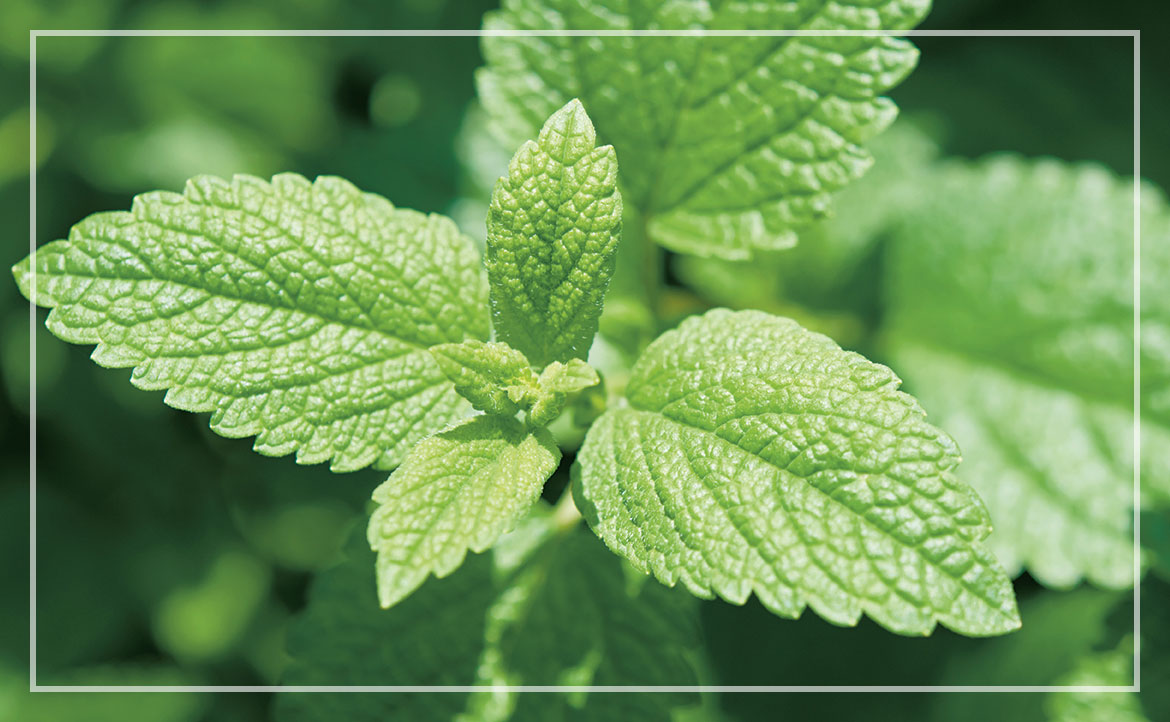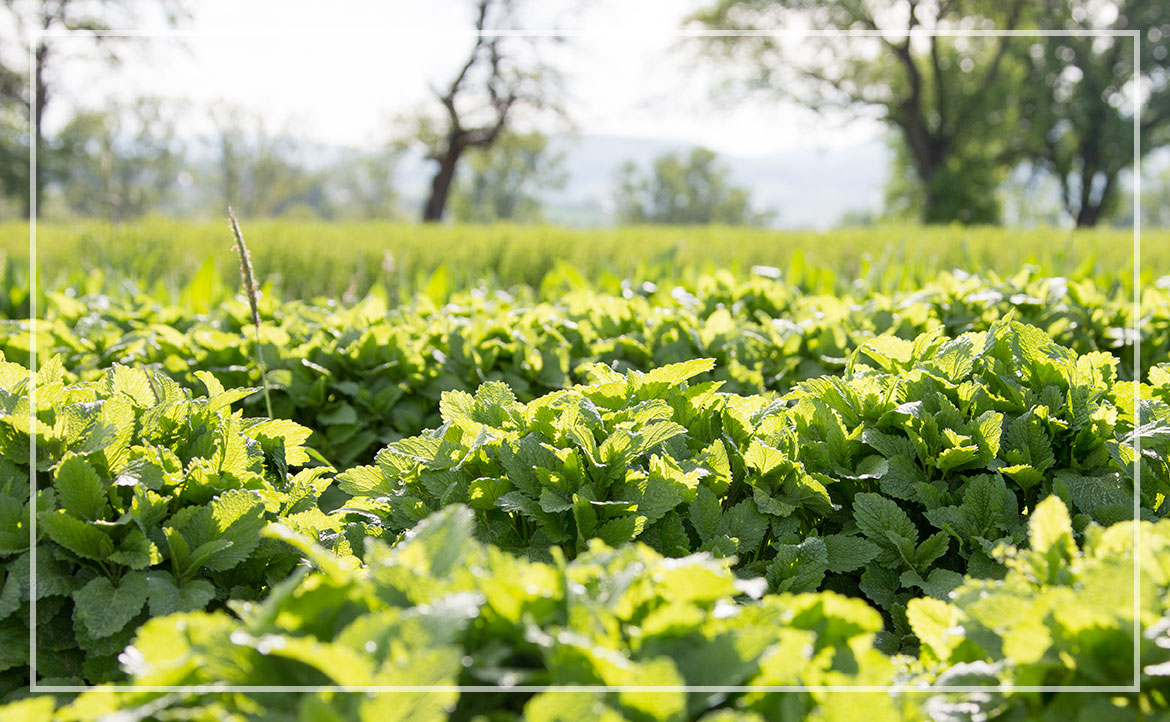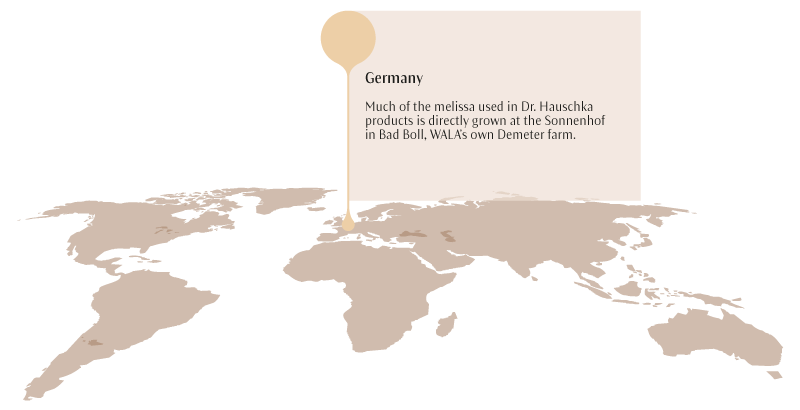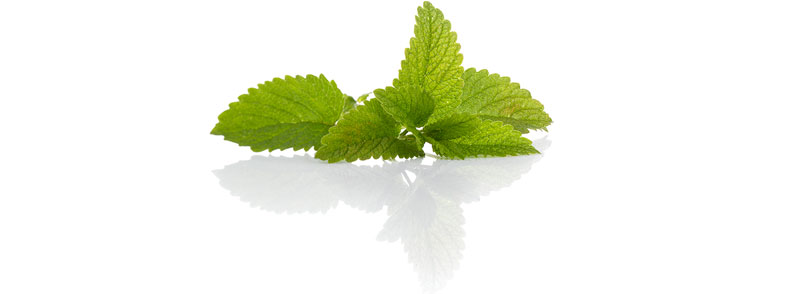Raw material profile
Run your hands through a bunch of strong, green melissa leaves (Melissa officinalis) and you will be treated to a fresh, lemony fragrance. This gentle touch test differentiates the peppermint-shaped leaves from those of mint plants. Lemon balm, as melissa is also known, has a truly unmistakeable fragrance. Freshly plucked from the plant, however, the leaves taste surprisingly harsh and slightly bitter – quite unlike you would expect based on their aroma. The fresh fragrance is created by certain constituents of the plant’s complex essential oil, primarily citronellal, geranial and neral, whereas the taste comes from the natural bitters and tannins. Melissa only contains about 0.3% essential oil, which is therefore classed as one of the most valuable and expensive oils. The area of cultivation, climate and time of harvest all have a strong influence on the overall composition. The tannins, such as rosemary, chlorogenic and caffeic acid, as well as flavonoids, supplement the leaves’ essential oils.
The white petals concealed in the leaf axils open up from July to August. If you take a closer look inside the petals, you will spot the lip which is typical of labiates, the family to which melissa belongs. The petals smell honey sweet, especially in contrast to the lemony leaves



















